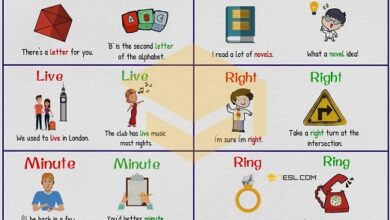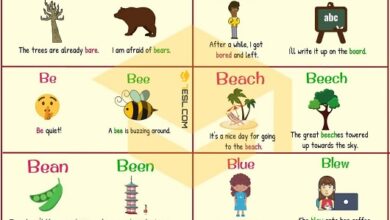Diminutive examples with characteristics and types
Diminutive
The diminutive is an ending that is added to a word to change its meaning and give a sense of smallness. In addition, this affix can be used effectively or disparagingly depending on the context. This last quality makes diminutives a form of appreciative derivation. Diminutive characteristics types and examples
The diminutives are commonly used in the Latin languages, they are part of the colloquial dialect of many regions. In some places they have wanted to downplay the diminutive, wanting to associate it with lack of education. But the reality is that they enrich the dialect by providing it with a diversity of nuances and meanings.
Although in many Latin countries they use the diminutive frequently, they are also widely implemented in Spain. Many Spanish provinces have characteristic and unique diminutives of their inhabitants. The autonomous community of Cantabria is proof of this; its inhabitants affectionately call it “La Tierruca”. “Uca” is an affective diminutive.
Characteristics of the diminutive
The diminutives have a number of characteristics:
1-Versatility in its application and uses
The breadth of the Spanish language leads it to group together a fairly large set of diminutives. Its characteristics will depend on the dialect and the expression. They are often used in nouns, but we can also find them in adjectives and sometimes in adverbs.
An example of a diminutive in a noun would be “puppy.” In an adjective it would be “tiny.”
2-Meaning according to context
The diminutives have different meanings depending on the context in which they are used.
We can call someone “chubby” affectionately. However, if we use an ironic tone to refer to that person, it is perceived as an offense.
Examples:
– How cute and tiny is your dog (positive).
– Do you like my house? Yes, but it is very small (negative).
3-Uses by region
Many countries make use of diminutives. There are some of each region. In fact, there are cases where different endings are used for the same word, but they mean the same thing.
Example:
– Fish: fish. (Some autonomous communities of Spain).
– Fish: little fish. (Common of Hispanic countries).
4-They add different meanings to the word they are applied to
Some can be written the same, but their meaning is different depending on the region. Such is the case of the adverb “Now”. Its diminutive is “Ahorita”, it is widely used in America and has a difference in terms of execution time.
Examples:
In Argentina, Bolivia, Ecuador and Nicaragua
The expressions “You must wash the car right now” or “Right now I’m going there” indicate that the action will be carried out now.
Colombia, Costa Rica and Cuba
In these countries it is proposed that such action will take place later. It is used in expressions such as “Tell him I’m going right now” or “I’ll call you right now.”
Mexico and Venezuela
In these countries there are no time indications for this expression. It may be said for a short time, a long time or it may never happen. When someone asks “Are you coming home?” and they answer with a “right now”, that does not guarantee how long it will take. Diminutive characteristics types and examples
Types of diminutives and examples
There are a great variety of diminutives in the Spanish language. Many of these are used worldwide but there are also regional ones. That is why they have been expanded, by the use and context given by the speakers. Some regions make diminutives part of their customs and distinction.
Among the diminutives for used we can find:
1-“-Ito” or “-ita”:
This ending is the most used universally. Both in Latin America and in Spain.
Examples:
– Skinny: skinny.
– Quick: quickie.
2-“-Cico” or “-cica”:
Very commonly used in eastern Spain, there we can also find it as “cico” / “cica”.
Example:
– Heat: caloric.
3-“-Tico” or “-tica”:
Its use is more common in Caribbean countries. In these places it is applied when the last syllable of a word ends contains the “t”.
Examples:
– Cat: kitten.
– Leg: patica.
4-“-Ín” or “-ina”:
It is generally used in the regions of León and Asturias. It is a variation of the “ito” that is mostly used as an expression.
Examples:
– Small: little one.
– Little: little.
5-“-Iño” or “-iña”:
It is characteristic of the town of Galicia. Likewise, in Portugal and Brazil it is used, but in this way: “inho” / “inha” (characteristic spelling).
Examples:
– Kiss: kiss.
– Dog: dog.
6-“-Illo” or “-illa”:
It is used mostly in Spain, especially in the Andalusian region. It is used to supplant the “ito” or the “ico”. It is very little used in America.
Examples:
– Tree: seedling.
– Car: carrillo.
7-“-Ete or” -eta “:
It is a diminutive originating from Catalonia and Valencia. It is also used in some object names that are similar, but have a difference in size. Diminutive characteristics types and examples
Examples:
– Shirt T-shirt.
– Truck: pickup.
– Friend: buddy.
8-“-Uco” or “-uca”:
This diminutive originates from and is commonly used in Cantabria. There is an affective expression. However, in other regions of Spain and America these endings are used disparagingly.
Examples:
– Brother: brother.
– Bad: maluco.
– Land: Tierruca.
There are other less used or less common diminutives that tend to be in specific regions, such as:
9-“-Sole” or “-uela”:
It is mostly used in Spain. We can also find it as “-zuelo” or “-zuela”, and used in a humiliating way.
Examples:
– Thief: petty thief.
– Fool: fool.
– Woman: slut.
10-“-Ejo” or “-eja”:
It is used in La Mancha (Spain). A clear example is found in the word “thing”. This is diminutive “coseja”.
11-“-Ijo” or “-ija”:
Diminutive that is usually used in a derogatory way.
Examples:
– Cheap: cheap.
– Lizard: lizard.
12-“-Ucho” or “-ucha”:
This diminutive is commonly used in Venezuela. Like “-zuelo”, it is used to offend or despise.
Examples:
– Fourth: room
– Lawyer: lawyer.
There is a Venezuelan name in which this diminutive is added. The natives of Maracaibo are called “maracuchos”. It is also common in some diminutives of names, such as Pedro. It is normal to hear that people with this name are nicknamed “Perucho”.
13-“-Is”:
It is widely used in the capital region of Mexico and Argentina. It does not have a gender or quantity mark.
Examples:
– Then: lueguis.
14-Diminutives of Murcia
There are several typical diminutives of the Murcian dialect. Among them we can highlight:
– “-ujo” or “-uja”: sparkle.
– “-icho” or “-icha”: zagalicho .
– “-iquio” or “-iquia”: capaciquio.
– “-ajo” or “-aja”: mengajo. Diminutive characteristics types and examples



